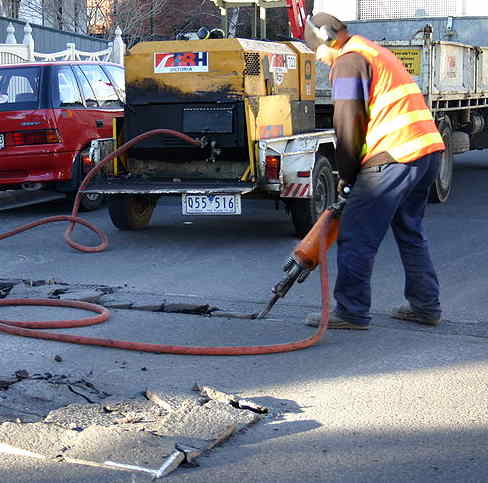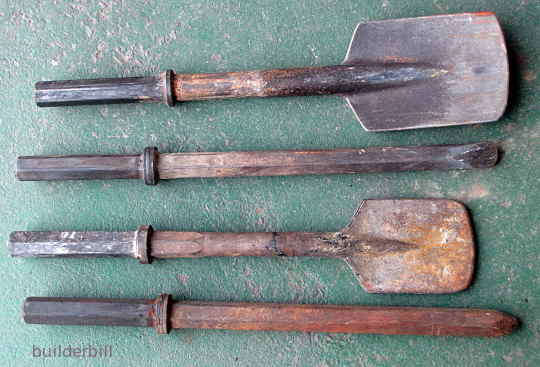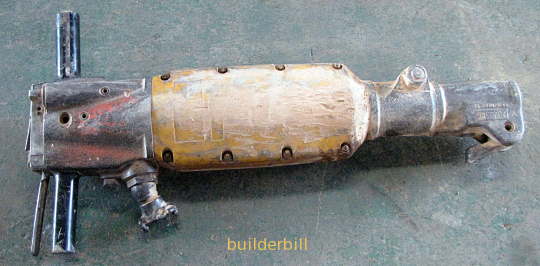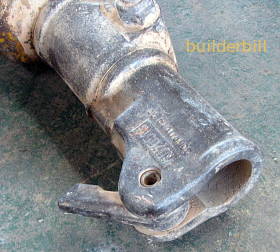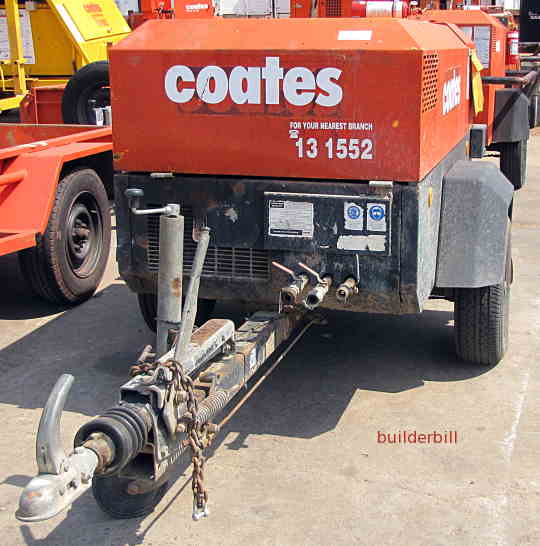 |
||||||||
Pneumatic Jack Hammer
Note! Apart from the photo above all the ones on this page are my own that I was kindly allowed to take at my local Coates hire depot. Another name for these tools is pavement breaker, and in the photo above (thanks to Wikipedia) is a guy doing just that. He is breaking up a road pavement. The tool in the breaker is a spade similar to the top tool underneath.
Above are a few standard sized 1-1/4" breaker tools which refers to the distance across the opposite flats of the hexagon. Another standard size that brides the gap between air and electric is 1". These tools fit air breakers and also the larger electric breakers. This is a great saving in costs, being able to use the same tool in a number of different machines. Smaller sizes (usually for electric tools) start to have various manufacturer's propriety shanks and so are not standard although some makers have opted to use Kango shanks or adaptors can be bought. From the top above:-
A 75lb (probably the maximum legal size allowed by "work health" OHSA etc. This size of breaker uses typically 80 to 90 cubic feet per minute (cfm) at 90 pounds per square inch (psi).
You may have noticed the rather inadequate 6' x 4' box trailer carrying the air compressor in the top photo. The photo here is what the modern safety conscious contractor uses in the way of a mobile air compressor. Note the override brake and hand brake. Not found it yet? Try this FAST SITE SEARCH or the whole web |
Hire Equipment  Furniture Fittings - Architectural Hardware - Electronic Locking Systems - Technical Hardware BuilderBill sponsorship Glossary Pages.Roof Glossary and Roofing Formwork Glossary and other tempory work. Hand Tools Glossary Power Tools Glossary Asbestos Glossary Woodwork Glossary Stair Glossary Concrete Glossary Masonry Glossary doors Glossary BuilderBill Books Building Maths  Stair Design  Asbestos Book |
|||||||
|
|
||||||||
|
Please Note! The information on this site is offered as a guide only! When we are talking about areas where building regulations or safety regulations could exist,the information here could be wrong for your area. It could be out of date! Regulations breed faster than rabbits! You must check your own local conditions. Copyright © Bill Bradley 2007-2012. All rights reserved. |
||||||||
